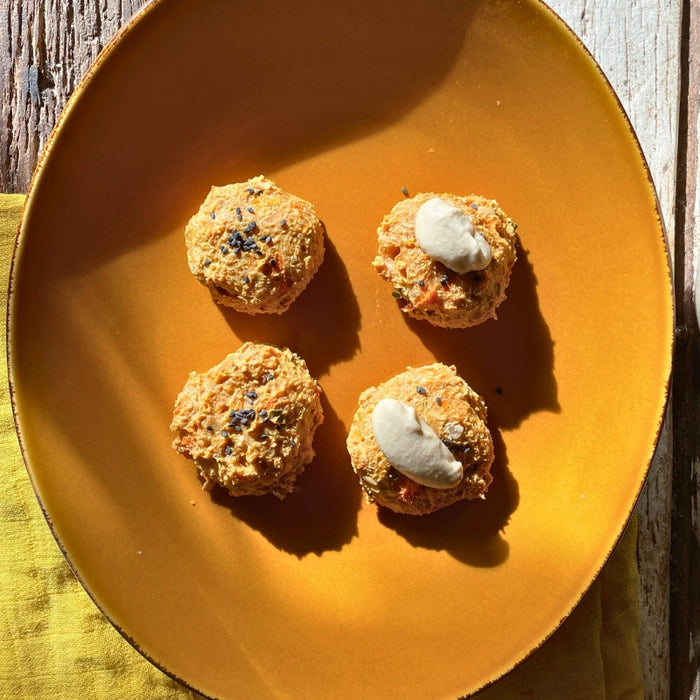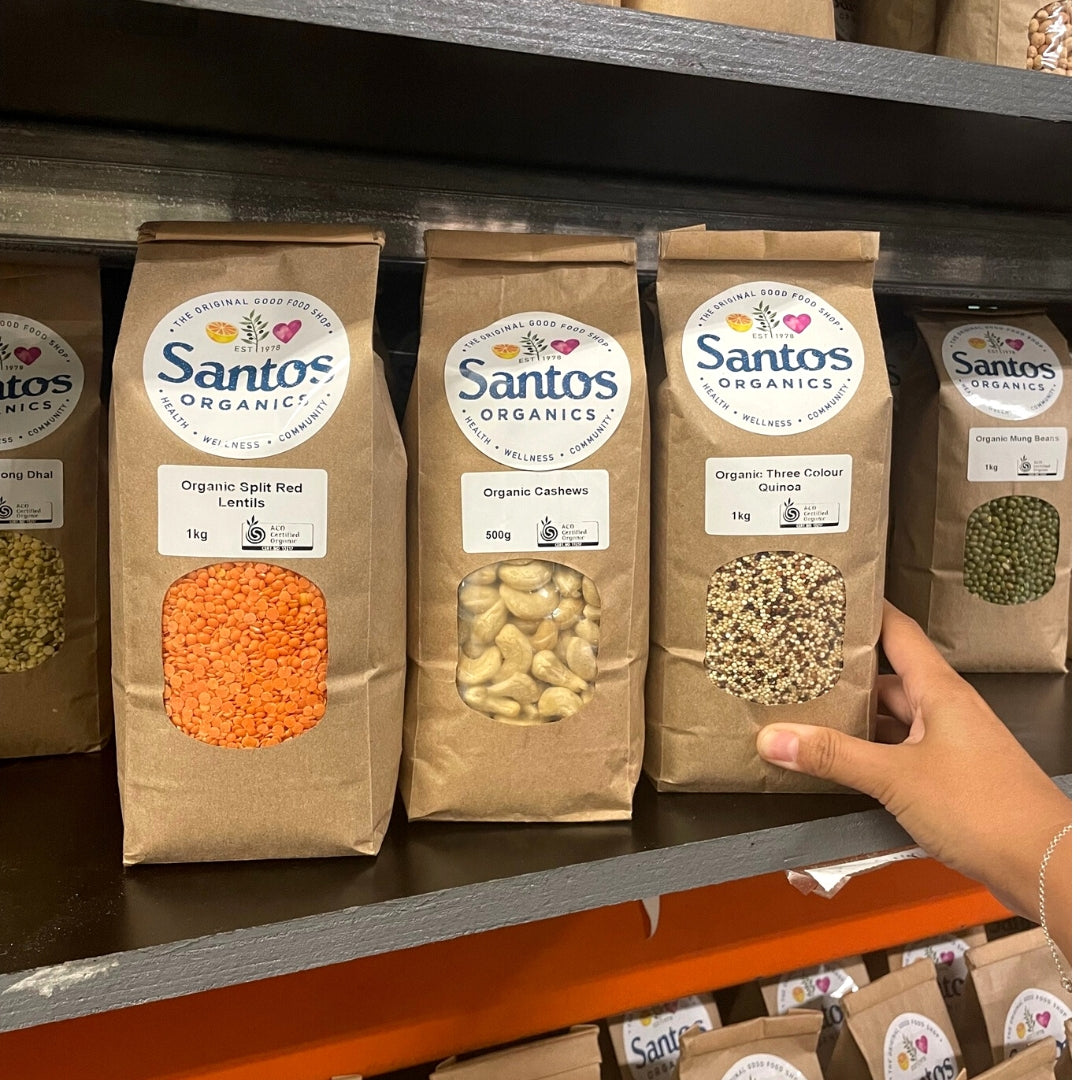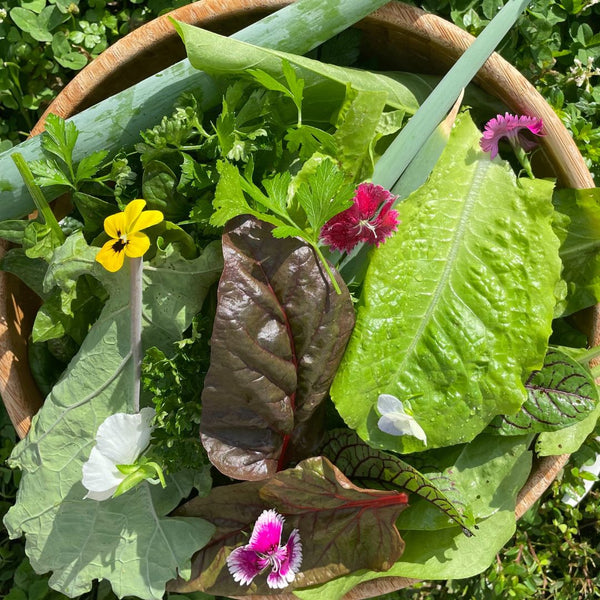Quinoa Patties With Tahini Sauce


When it comes to food sources for iron intake, there are a couple of things you should know. There are two primary types of iron: Heme and nonheme iron.
Heme iron is the type of iron found mainly in animal sources like meat, whereas nonheme iron is the type that is predominantly found in plants. Nonheme iron is not as readily absorbed as heme iron, so it’s even more important for vegetarians to get an adequate amount through food, as the percentage absorbed will be lower. Research shows you can get the best iron absorption by consuming plant-based foods high in iron along with foods high in vitamin C, such as citrus, broccoli, and tomato in the same meal.
To maintain healthy iron levels, it is not just how many foods high in iron you eat, or how strong your iron supplements are, but also how well your body absorbs the iron. There can be other causes for anemia other than not getting enough iron, such as digestive issues (malabsorption), toxicity—such as lead toxicity, and heavy menstrual flow.
Here is a list of 9 iron rich plant-based sources and tips how to use them in your daily cooking:
Any dark greens such as Swiss Chard, Spinach or Silver Beat has an impressive profile when it comes to nutrient density. With nearly 4mg of iron per cup of cooked Swiss chard, this particular green packs a serious punch. Dark greens are easy to grow and such a great source of vitamins, minerals, antioxidants, and other nutrients.
How to enjoy: Swiss chard or dark greens is tasty and simple to prepare. Try sautéing or steaming with just a squeeze of lemon, a couple of cloves of garlic, and a sprinkle of salt. Add the leafy greens to any soup or stew right before serving, with just enough time for it to wilt. For a nutrient-rich breakfast vegetable, serve gently cooked as a bed for your poached eggs.
You have likely grabbed a handful of cashews for a quick snack or maybe spread some cashew butter on your favourite cracker. Known for their high mineral content, including iron, and a super-creamy texture when blended, cashews and cashew butter are often used to make vegan milks, soups, and sauces. Cashews are a wonderful ingredient to snack on and to include in many vegetarian and vegan dishes for a healthy supply of plant-based iron.
How to enjoy: Cashews are delicious (and more easily digested) when soaked in sea salt water overnight and roasted on low in the oven for 10 to 12 hours for a crispy and salty snack. Try making a pad Thai sauce with cashew butter (instead of peanut butter), or use cashews as a thickener in a vegan curry or blended vegetarian soup. Try blending cashews with nutritional yeast, lemon, garlic, salt, and water for a delicious vegan cheese sauce.
Lentils have been providing nutrition and sustenance for an estimated 8,000 years. The many variations of lentils (red, yellow, green, and black) are known as high-protein plant-based foods that are also high in iron content and easy to digest. Earthy and nutty in flavour, lentils are a versatile food to explore and include as reliable sources of iron (as well as reliable sources for protein and fiber) in any plant-based meal or diet.
How to enjoy: Try using lentils in a variety of soups or as the protein base for a veggie burger. Lentils also go well with traditional curries or atop of your favourite salad for a protein, fiber, and iron boost. Having a party or gathering? Try using lentils in a dip or spread (with tahini, chopped garlic cloves, lemon juice, and olive oil and puree until smooth) as an appetizer.
Best known in Mediterranean-type dips such as hummus and baba ghanoush, tahini (ground sesame seed butter) is rich in the essential trace mineral iron. A variation of tahini is black tahini, which comes from black sesame seeds and has a more intense sesame flavour.
How to enjoy: While hummus is a popular tahini-based dip that you may already include in your diet, there are many other tahini options you might enjoy. Try it as a base for a creamier salad dressing. Blend into a soup for a creamier texture. For a nutrient-dense sweet treat, try on a piece of toast with a drizzle of honey.

Molasses is the viscous liquid that comes from processing sugar beets or sugarcane into sugar. Considered a high potency plant-based iron source that can work to raise bodily iron levels and treat anemia, molasses is an easy ingredient to include in your diet.
How to enjoy: It is easy to find a bottle of blackstrap molasses at your local health food store; for the best quality, shoot for organic and unsulfured (made from mature sugarcane plants that have been allowed to ripen naturally before processing, keeping the nutrients intact). Try using molasses as a sweetener in dessert recipes, especially those that call for maple syrup or brown sugar, for a richer flavour. Use a dollop with olive oil or butter to coat your favourite roasted vegetables, such as carrots, sweet potatoes, or pumpkin. Try a teaspoon in your morning oatmeal or yogurt for some subtle but tasty sweetness. Lastly, feel free to eat molasses right off the spoon for a daily dose of plant-based iron.
Quinoa, the ancient grain that is native to the Andean mountains of Peru, was known as the queen of all grains to the Inca people and was considered a superfood. Making its mark in the health food industry today, quinoa is a wonderful source of plant-based protein as well as plant-based iron. One cup of cooked quinoa provides 2.8 mg of iron.
How to enjoy: Quinoa can be substituted for rice or couscous in just about any dish. Try creating a delicious mixed vegetable stir fry served over quinoa for a balanced and satiating meal. Make into a version of tabbouleh, substituting nutrient-dense and iron-rich quinoa for the more traditional couscous. Grind quinoa in a coffee grinder and mix with hot water to make an instant warm breakfast cereal that you can top how you would your favourite oatmeal. Want a little boost to your salad? Add cooked quinoa to your mixed green salad for a little extra plant-based iron and protein.
Why dried? Because dried fruits contain much less water, their iron and other nutritional content is concentrated. Dried apricots (at 10 mg per half-cup) and prunes (at 4.5 mg per half-cup) are significant fruit sources of iron.
How to enjoy: as a snack in between meals, chopped in morning porridge or in baking your cookies.
Known as the fruit of the stunning late summer sunflower, sunflower seeds are a rich source of minerals, including plant-based iron. Sunflower seeds are also known for their hypoallergenic quality—a nice nut-free option—making sunflower butter a great replacement in dishes for those with nut allergies. You can find these highly nutritious seeds growing in a wide array of locations around the globe.
How to enjoy: Roast the seeds for just a minute on your stove top in a cast iron skillet with your favourite spice blend and sprinkle on top of your favourite salad. Mix raw or roasted into any trail mix or try sunflower nut butter as a replacement in a classic PB&J for those with peanut allergies.
The iron your body needs to survive is the same iron found in cast iron pans. If you cook with these pans, your food will absorb some of their iron. Skip non-stick pans and use cast iron instead when frying veggies or eggs.
Eating a diet that has healthy and potent plant-based foods high in iron is a wonderful goal to set for your ongoing health. Ensuring you include some plant-based iron-rich foods on your plate can be easy, cost-effective, and tasty. This may be just the nutrient you need to feel strong, vital, energized, and ready to live life to the fullest.